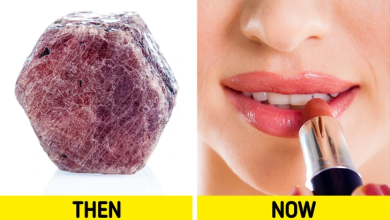Aluminum foil and bubble wrap are useful for a variety of purposes, but not for keeping heat in the house. Your opinion of them will change once you learn how they can heat-proof your home. Not only can they trap heat, but so can a few other methods that don’t require you to spend your entire paycheck.
Cover the floor with carpets
Carpets are as good as fiberglass when it comes to thermal insulation and ten times better than the floor itself. They can reduce energy costs and therefore greenhouse gas emissions since they trap the heat inside. It is best if a room can be carpeted from wall to wall so that the loss is as little as possible. Not only that, but fuzzy rugs make you and your feet feel warmer which will keep you from increasing your thermostat.

Put aluminum foil behind the radiators
Heat is frequently lost through external walls when radiators are attached to them. One clever way to combat this is to place aluminum foil behind the radiators, causing the heat to be pushed back into your room. You can only use the foil you have in your kitchen if it is of high quality. If not, you can buy a foil made specifically for this purpose for less than $10.

Adjust the ceiling fans so they spin clockwise
It is vital that you change the rotation of your ceiling fans from counterclockwise to clockwise during the cold months of the year. This will allow them to send the warmth trapped at the top back to you at the lower levels. This slight change can save you up to 10% in heating costs since your main heating will be working less. Let it be noted that you should turn the fan off if a room is unoccupied to save up energy.

Put plastic bubble wrap on the windows
Windows are one of the most significant sources of heat loss, and bubble wrap can easily prevent this. It can reduce heat loss by up to 50% on a single-pane window and up to 20% on a double-pane window. To stick the bubble wrap on the window, all you need is a pair of scissors and a spray mister. It is recommended that you purchase wrap with larger bubbles because they will allow more light into your home.

Install shelves above your radiators
If you have very tall ceilings or your radiator is placed under a window, a shelf will redirect the heat to your advantage. Instead of the heat going to the top of your ceiling, it will be hitting the shelf and changing direction. In the case where your radiator is below a window with long curtains, heat is usually trapped between the window and the curtains. However, if you install a small shelf you will manage to keep heat from being lost through the window.

Install a door sweep
Sometimes we don’t realize how much heat is exiting our home through the bottom of the door. A door sweep is like a thin, long broom that you will need to install at the inside of your door. It is very cheap and easy to install and you can cut it based on the length of your door. You will only need 4-5 screws to nail to place and it will keep that cold breeze outside where it belongs.

Make sure your letterbox has a second flap or brushes
The most efficient letterboxes are undeniably the ones that have 2 metal plates on both sides of the door and brushes in the middle. It’s not only about stopping letters but also about not letting the cold get in and the heat get out. And sometimes postmen will leave your mail hanging on the exterior plate, which means that the cold will have a way in. So, by installing the interior plate and the brushes, you will be adding another layer of protection towards the cold.

Wrap your pipes to prevent them from freezing
Pipe sleeves, heat tape, and heat cables are some of the materials you can use to protect your pipes from breaking. And that’s a pretty normal thing to happen if the temperatures reach very low levels. We realize that this might be a bit too much for your budget, so in that case, you can do something else. Wrapping your pipes with something as simple as newspapers can prevent them from bursting.








